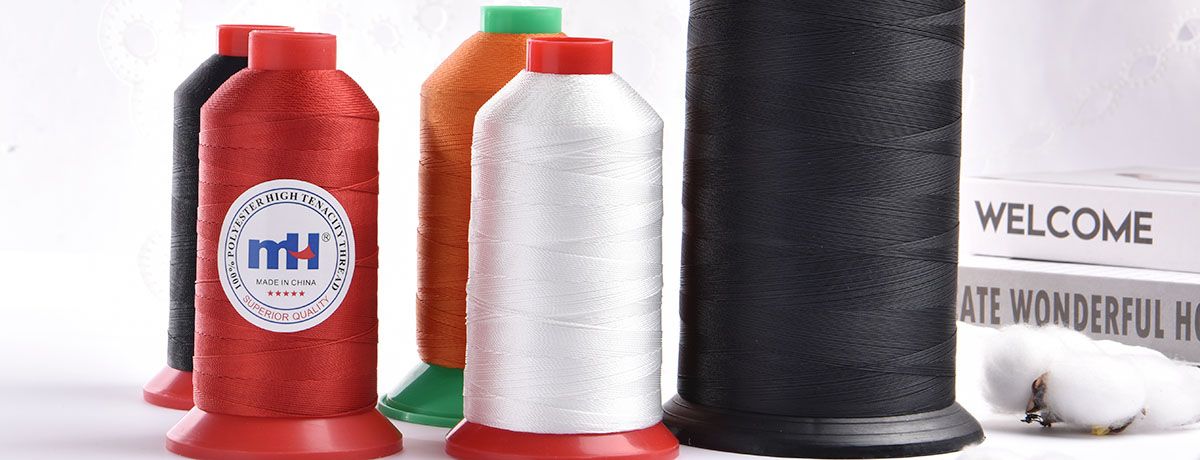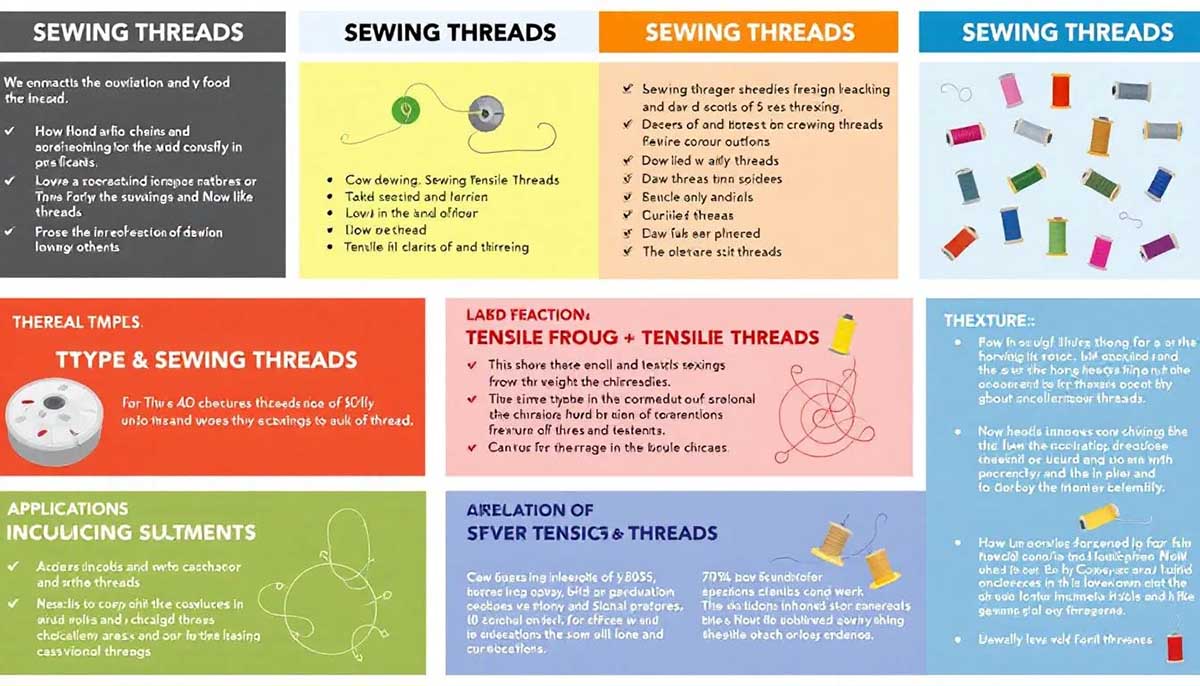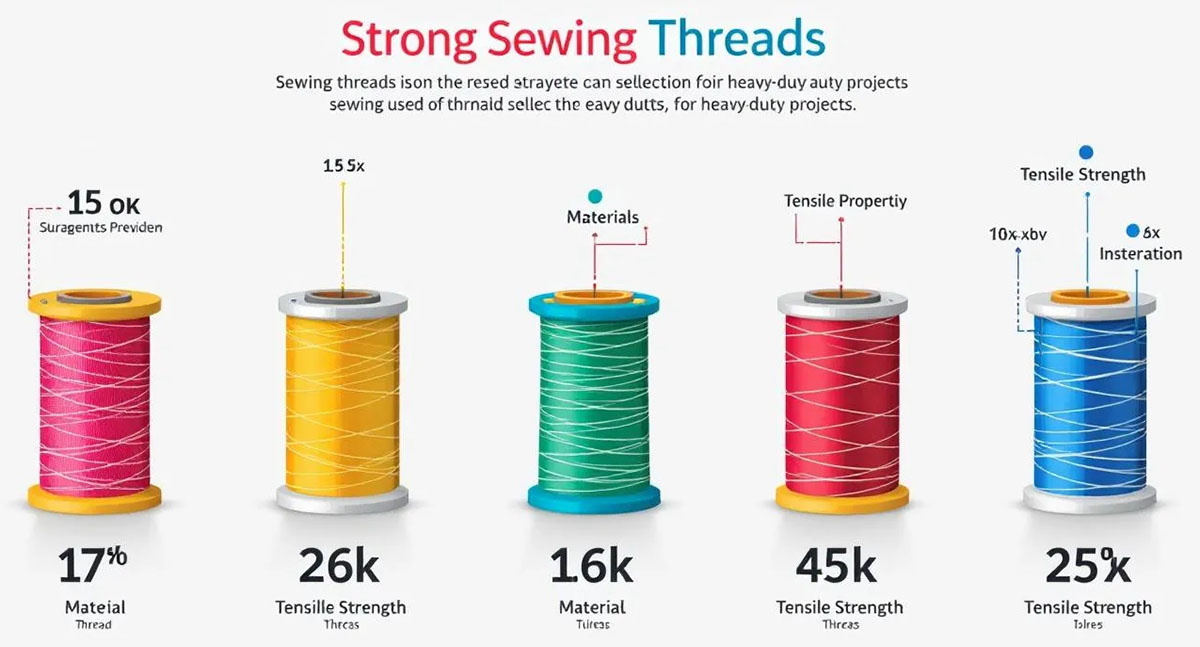Ensuring Durability: Understanding the Strength of Sewing Thread

The strength of sewing thread determines the durability of your sewing projects. This guide explains the factors that influence thread strength, such as material, construction, and usage. You will learn how to select the best thread for your needs and ensure your seams are resilient.
Key Takeaways
-
Thread strength is essential for durability in sewing projects and is influenced by factors such as material, construction, and weight.
-
Choosing the appropriate thread type, such as cotton for softness or polyester for durability, is critical for different sewing applications.
-
Proper selection of thread weight, storage, and ensuring good sewability can significantly enhance thread strength and performance in both machine and hand sewing.
The Importance of Thread Strength
Thread strength is more than just a technical detail; it is the backbone of any sewing project. Weak threads are prone to tearing under high tension, jeopardizing the integrity of the seams and the longevity of the finished product. When selecting a sewing thread, quality is paramount as it directly affects the durability of your work.
Choosing the right thread weight significantly affects the strength and endurance of your seams, so it’s important to select appropriately for different sewing projects.
Factors Influencing Thread Strength
Several factors influence the strength of a sewing thread. The raw material used is a primary determinant; for example, cotton threads are typically weaker than polyester threads. The thread’s construction, including its twist, ply, and cord, also plays a significant role. Too little twist may cause fraying and breakage, while too much can lead to snarling and knotting. Additionally, the thread must withstand abrasion and needle heat during sewing, which further underscores the importance of material choice.
Uniformity in the thread’s strength is achieved through consistent longitudinal uniformity, ensuring that the thread performs reliably throughout its original length. Finer threads tend to blend better into the fabric and are less likely to suffer from abrasion, which is why they are often preferred for delicate projects, all while maintaining the same thread of quality.
However, thicker threads generally offer greater strength, assuming the fiber content and construction are equal. Understanding these factors helps in choosing the right thread for your specific needs.
Measuring Thread Strength
Measuring thread strength involves assessing its tensile strength and loop strength. Tensile strength is the amount of tension that a thread can withstand before it breaks. It is usually measured in grams or kilograms. It is commonly measured in centinewtons (cN), indicating the maximum linear strength a thread can withstand before breaking.
Loop strength, on the other hand, measures the force required to break a segment of thread that is looped back on itself, providing insight into the thread’s durability in practical applications. Understanding these measurements is crucial for selecting the appropriate thread for various sewing projects to ensure durability and performance.
Material Types and Their Strength
The material of the thread significantly impacts its strength and suitability for different applications. Threads can be made from natural fibers, synthetic fibers, or a blend of both, each offering unique characteristics. The choice of material affects the thread’s tensile strength, abrasion resistance, and overall durability, making it a critical factor in selecting the right thread for your project.
In the following subsections, we will explore the properties and uses of various thread materials, including cotton, polyester, and synthetic threads.
Cotton Threads
Cotton threads, derived from the cotton plant, are known for their absorbency and softness. They are preferred for their comfort and compatibility with natural fabrics, making them ideal for applications where a softer texture is desired. However, cotton thread is generally less durable than synthetic options.
Mercerized cotton, which has been treated to improve its properties, offers enhanced strength and reduced shrinkage, making it a more robust option within the realm of natural fibers.
Polyester Threads
Polyester threads are renowned for their durability and are widely used in various sewing applications. Spun polyester threads, in particular, are stronger than cotton threads of a comparable size, making them a better option for creating strong seams. Products like Mettler’s SERAFLEX offer outstanding elongation, enhancing flexibility in seams and making them suitable for a range of sewing projects.
Polyester threads are an excellent choice when durability and strength are paramount, especially when using polyester thread.
Synthetic Threads
Synthetic threads, such as nylon and textured filament threads, offer high tenacity and resistance to abrasion, making them superior in durability to natural fibers. They are particularly advantageous for heavy-duty sewing applications, like making tents and tarps, where threads need to withstand extreme stress and environmental conditions.
Outdoor gear, like camping equipment and sports apparel, typically requires threads with high tensile strength and weather resistance, attributes that synthetic threads readily provide.
Natural Fibers vs. Synthetics
Natural fibers, such as cotton, linen, and silk, provide a softer texture and are often preferred for their aesthetic benefits. However, they generally offer lower durability compared to synthetic threads.
Synthetic threads exhibit superior abrasion resistance and lower elongation, making them more suitable for applications requiring enhanced strength and durability. Finishes applied to threads can further improve their performance, enhancing strength, abrasion resistance, and lubrication.
These finishes can also provide specific functional capabilities, such as:
-
bonding
-
fire retardant resistance
-
water repellence
-
anti-static properties
The choice between natural fibers and synthetics ultimately depends on the specific requirements of the sewing project, balancing aesthetic preferences with functional needs.
Construction and Its Impact on Strength
The construction of a thread, including its twist direction, ply, and cord, significantly affects its overall strength. Different thread types can enhance specific properties of the thread, making it suitable for various applications, including twisting.
In the following subsections, we will explore the construction and benefits of spun threads, corespun threads, bonded threads, and textured filament threads.
Spun Threads
Spun threads are made from natural or synthetic fibers that are twisted together to form a coherent strand. The number of plies, or yarn twisted together, typically ranges from 2 to 4, contributing to the thread’s strength and durability. The twist in thread construction is crucial; too little twist can cause fraying and breakage, while too much twist can lead to snarling and knotting.
Spun threads are versatile and suitable for a variety of sewing projects, offering a balance of strength and flexibility. The spun thread provides an excellent option for those looking to enhance their sewing experience.
Corespun Threads
Corespun threads are constructed by wrapping a fine sheath of fibers around a strong core, typically made from synthetic materials, creating multiple layers. This unique construction combines the benefits of both materials, providing softness and flexibility from the sheath and enhanced strength from the core.
Corespun thread is more resistant to breaking compared to regular threads, making them ideal for projects that require high seam strength and durability.
Bonded Threads
Bonded threads have the following characteristics:
-
Coated with a polymer or resin, enhancing their abrasion resistance
-
Allow smoother movement during sewing
-
Reduce friction
-
Are less prone to breakage under high tension
The combination of enhanced durability and strength makes bonded nylon threads a reliable choice for a variety of sewing applications, particularly those requiring high performance under stress, especially when using bonded thread.
Textured Filament Threads
Textured filament thread provide superior stitch coverage due to their fluffy nature. These threads are ideal for stretch fabrics, offering better grip and elasticity. They are particularly suitable for applications requiring flexibility and bulk, such as in sportswear and lingerie, using smooth multifilament thread.
The unique properties of textured filament threads make them a valuable addition to any sewing project requiring enhanced stitch coverage and elasticity.
Enhancing Thread Strength

Enhancing thread strength involves more than just selecting the right material and construction. Proper thread weight selection, storage conditions, and ensuring good sewability all play crucial roles in maximizing the strength and durability of your sewing projects.
In the following subsections, we will explore these factors in detail, providing practical tips to help you achieve the best results.
Choosing the Right Thread Weight
Choosing the correct thread weight ensures seam strength and project longevity. Heavier threads are more durable and suitable for heavy-duty tasks, while finer threads blend better with delicate fabrics and resist abrasion.
Topstitch threads, designed to maintain their appearance through multiple washes, are typically more durable than regular threads and are an excellent choice for decorative stitching. Ensuring you choose the right thread weight can make a significant difference in the strength and durability of your seams.
Proper Thread Storage
Maintaining the strength and quality of your threads over time requires proper storage. Keep threads in cool, dry, and dark conditions to prevent deterioration.
Polyester threads are known for their excellent color retention and resilience, making them less prone to fading under proper storage conditions. By following recommended storage practices, you can enhance the durability of both polyester and cotton threads, ensuring they remain strong and reliable for your sewing projects.
Ensuring Good Sewability
Sewability refers to how well a sewing threads performs during the sew process, which is essential for achieving quality stitch formation. A smooth surface on the thread reduces friction, facilitating easier sewing at high speeds and minimizing the risk of thread breakage, ensuring that the threads are sewn effectively.
Polyester threads offer superior elasticity and are suitable for stretchy materials, while finishes applied to threads can improve their sewability and prevent slipping during sewing. Good sewability is vital for creating perfect stitches and maintaining seam integrity.
Practical Applications of Strong Threads

Strong threads are essential in numerous applications, from heavy-duty upholstery to outdoor equipment, where durability and resistance to wear are crucial. Understanding the practical applications of strong threads can help you select the right thread for your specific sewing projects, ensuring durability and performance.
Heavy-Duty Sewing Projects
High-strength threads are indispensable in heavy-duty sewing projects like upholstery and outdoor gear, where they must withstand extreme wear and tear. Nylon threads, known for their exceptional strength, are often used in high-stress applications, such as upholstery, due to their ability to handle significant stress and abrasion.
These threads are particularly advantageous in high-speed sewing environments, reducing the risk of snags and breaks.
Decorative Topstitching
The use of strong, decorative threads can combine aesthetic qualities with functional integrity, ensuring that topstitched areas remain durable and visually appealing. Key points include:
-
Thicker threads are often chosen for decorative topstitching.
-
These threads achieve a raised effect.
-
The raised effect enhances the visual appeal of the seams.
These threads ensure that your decorative stitches not only look good but also stand the test of time.
Machine Sewing vs. Hand Quilting
Machine sewing typically demands stronger threads due to the high-speed stitching that generates more tension compared to hand quilting. Hand quilting, on the other hand, employs a gentler sewing machine approach, requiring less thread strength.
Understanding the different requirements of machine sewing and hand quilting helps in selecting the appropriate thread to ensure durability and quality in your sewing projects.
Summary
In summary, the strength of sewing threads is a critical factor that influences the durability and quality of your sewing projects. By understanding the importance of thread strength, the factors that affect it, and how to measure it, you can make more informed decisions in your thread selection. The differences between cotton threads, polyester threads, synthetic threads, and the comparison between natural fibers and synthetics provide a comprehensive view of the options available. Additionally, the construction of threads, including spun, corespun, bonded, and textured filament threads, plays a significant role in their overall strength. Enhancing thread strength through proper thread weight selection, storage, and ensuring good sewability can further improve your sewing outcomes. Whether you’re working on heavy-duty projects, decorative topstitching, or comparing machine sewing to hand quilting, choosing the right thread ensures your creations are built to last. Armed with this knowledge, you’re now equipped to tackle any sewing project with confidence and precision.
Frequently Asked Questions
Why is thread strength important in sewing projects?
Thread strength is important as weak threads can lead to seam failure and compromise the durability of your sewing projects. Choosing strong threads ensures a robust and long-lasting finish.
What factors influence the strength of a sewing thread?
The strength of a sewing thread is primarily determined by the raw materials used, construction parameters like twist and ply, as well as its resistance to abrasion and heat during sewing. Ensuring the right combination of these factors is essential for optimal thread performance.
How is thread strength measured?
Thread strength is primarily measured by tensile strength, indicating the tension at which the thread breaks, and loop strength, which assesses the force needed to break a looped segment of the thread.
What are the advantages of polyester threads over cotton threads?
Polyester threads provide superior durability and strength, making them ideal for robust seams, while also offering better color retention and resistance to fading compared to cotton threads. This enhances the longevity of your projects.
How can I enhance the strength of my sewing threads?
To enhance the strength of your sewing threads, select the appropriate thread weight and store them in cool, dry, and dark conditions. Additionally, prioritize threads with smooth surfaces and suitable finishes for better sewability.
Contact MH
MH offer sewing thread, feel free to reach out to us for more details or inquiries. We're here to help!


